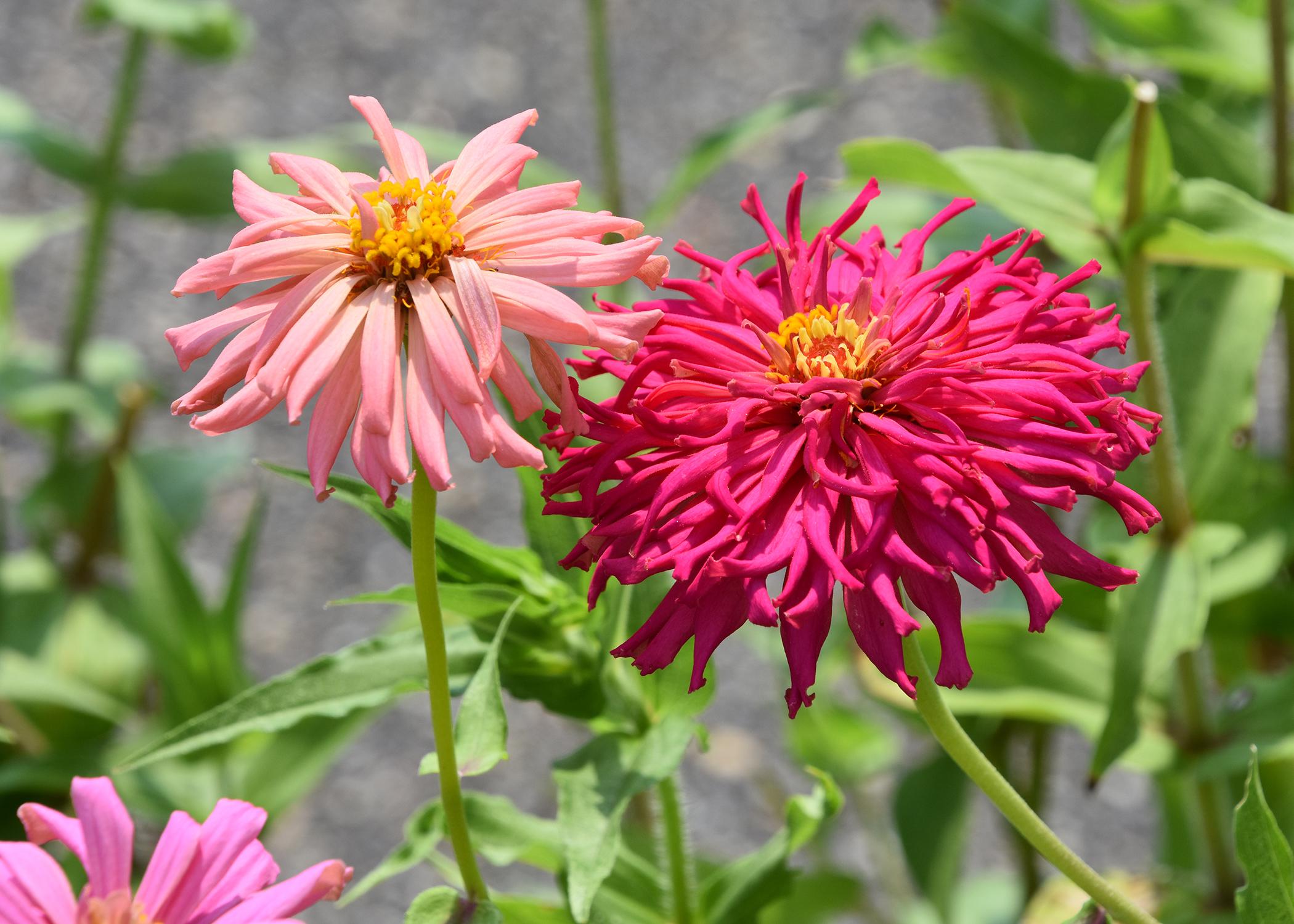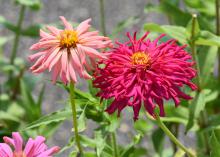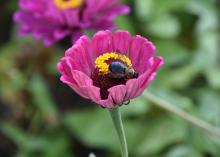Information Possibly Outdated
The information presented on this page was originally released on April 11, 2022. It may not be outdated, but please search our site for more current information. If you plan to quote or reference this information in a publication, please check with the Extension specialist or author before proceeding.
Zinnias are easy plants for summertime gardens
I’ve had quite a few things going on this spring, and I’ve come to the decision that I should try to make my garden and landscape a little bit less intensive. Like that is actually going to happen, but I’m going to give it a try.
For my vegetable garden, I’m only planting half the number of tomatoes that I’ve grown in past years. I’m also waiting until mid-May to transplant my various eggplants and the 63 pepper varieties I’m growing this year.
Another strategy I’m going to concentrate on is direct seeding many of my summer annual color selections. This won’t have the immediate impact of adding colorful transplants to my landscape, but it will create a landscape that will change and evolve as the summer progresses.
At least that’s my game plan.
One of my all-time favorite color annuals is zinnia in all its gorgeous variety. I like zinnias because they are one of the easiest flowering annuals to grow. Zinnias love our Mississippi summer heat as long as they are consistently watered and fed.
I’m going to plant more seed every two to three weeks this summer, and I hope this will create a very colorful and enjoyable landscape.
Another reason I like zinnia is because of the seemingly endless varieties that can be direct seeded. There is a wide selection of colors and mature sizes that can fit into almost area in my garden.
Zinnias also are magnets for pollinating insects, butterflies and hummingbirds.
I was fascinated by the short selections I grew last year. They had names like Lilliput, Thumbelina and Pumila, and they were gorgeous.
Another great choice is cactus-flowered zinnia. These are heirloom selections that have a much different look from the classic, pompom flower types. These zinnias display flowers that can be up to 5 inches across with quill-type petals.
Of course, I’m going to grow some of the pompom types, like Benary Giant and Magellan. These can be real showstoppers, with baseball-shaped flowers up to 6 inches across. I find it remarkable that these zinnias can grow up to 4 feet tall with huge flowers and still hold up well to our summer rainstorms.
Deadheading is the one small maintenance chore that needs to be performed with these zinnias, but it really isn’t a bad thing. I go out every few mornings and collect the newly opened flowers to bring inside and enjoy as beautiful, homegrown bouquets.
There are other zinnias available at your favorite garden centers that are better when used as transplants. These include the Profusion and Zahara series, which I’ll tell you about another time.





